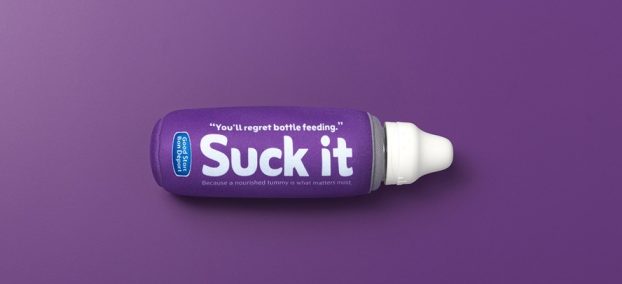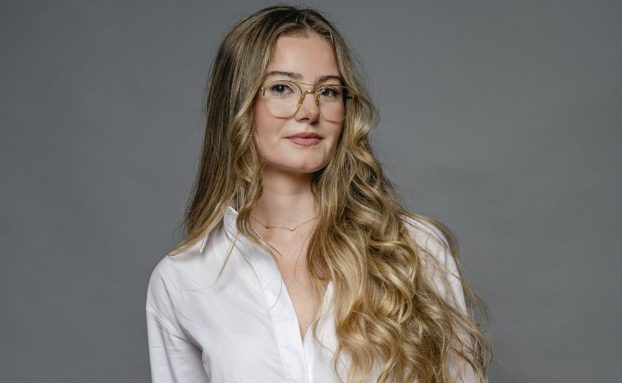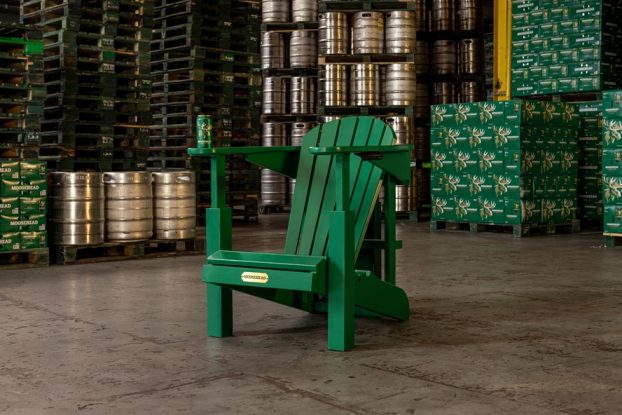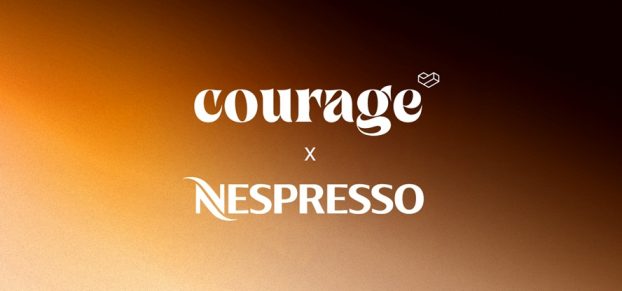The gamble paid off.
The companies that threw money into this year’s Winter Olympic Games were rewarded with a record medal win by the Canadians. And while we all enjoy the halo effect of such victories, some corporate sponsors and advertisers fared better than others.
To gain some post-Games insight on how to make the most of an Olympic sponsorship, Strategy put together a panel of client marketers and sponsorship experts to watch the games with sponsorship effectiveness in mind. Their conclusion? It’s not how much money you throw at the coloured rings, it’s what you do with it.
Needless to say, Roots, without fail, was cited as the gold medal winner. ‘Success is one word – Roots,’ says David Morelli, manager of communications for technology networking company 3Com Canada and manager of global programs for 3Com Corporation. ‘They were everywhere.’
The Canadian, American and British teams all sported Roots wear and the stellar performance of the first two countries translated into a record number of people quickly becoming familiar with the brand.
‘They so kicked the rear ends of any other corporation,’ says sports marketer Michael Gouinlock, president of The GEM Group, Toronto. He says that the ROI gleaned from securing such exposure on such sacred ground has got to be phenomenal. ‘In a supposedly logoless event, Roots was there.’
But Roots was in a unique position to make its mark. Other sponsors and advertisers, having to contend with an environment that is becoming more and more cluttered – you know we’ve gone too far when there’s an ‘official home appliance supplier’ (Sears) for the Games – weren’t so fortunate. Some, it seems, simply got lost in the crowd while others, at least in our panel’s opinion, wasted their opportunity.
The upside is that thanks to Canada’s stellar performance, the glow lives on, giving corporations a second chance to link their brands to Olympic victory.
It took no time at all before North America’s new couple-of-the-moment, Jamie Salé and David Pelletier, were approached with endorsement contracts. Packaged goods giant Procter & Gamble of Cincinnati snapped up the couple to endorse its Crest Whitestrips, while Kimberly-Clark signed the couple on for its Kleenex brand.
The experienced companies are already proving that they have plans to build further on their Olympics experience. Some didn’t even wait for the closing ceremonies before leveraging their position. Coca-Cola, McDonald’s and Molson Canada all had congratulatory hockey ads prepared long in advance of the final Game. The fact that Canada won both gold medals in our national sport gave the spots even more impact.
‘The challenge for advertisers now is how do they extend it?’ asks Gouinlock. ‘How do they build on this tremendous 17-day hit?’
Lisa McLachlan
Associate partner (marketing),
Accenture, Toronto
On rating the creative…
From purely a creative standpoint, I’d give the Gold medal to McDonald’s – ‘What would you do with your last French fry?’ The silver goes to Blue Light [the ad where snowboarders iron their clothes on the mountain by boarding over them]. It’s the most hilarious ad. The bronze goes to Dairy Farmers. I thought their ad [cows judging the performances] was very funny…it turned the seriousness of figure skating on its ear.
In terms of breaking through the clutter, the Bell ads win just by sheer media weight and brilliant creative. It was very passionate. I still have the ‘Go’ tune going through my head. It was also well linked to their brand.
If you’re going to spend that kind of money, you have to make sure you have great creative. Chrysler and RBC must have invested quite a bit of money, but I didn’t see the exposure there compared to the others.
You’re looking at creative that has to be emotive. Make the people you’re trying to reach feel something, tug on their heartstrings or make them laugh or be proud to be Canadian.
David Morelli
Manager of communications,
3Com Canada, Mississauga, Ont.
On his idea of an advertiser thinking
outside the rings…
Home Depot. I thought that their trading cards promotion was a great idea. [As a supporter of the Olympic Job Opportunities Program, the retailer provides full-time salary and benefits for Olympic hopefuls in exchange for part-time work. The athletes are then provided with Home Depot trading cards, which they use for autographs during the Games. Several commentators mentioned these cards during the Olympic broadcast.]
The company’s TV spot also transcended the traditional commercial spot. It generated attention. And the rolling tally at the end of the commercial which showcased the number of medals won so far made it timely and more relevant. In some cases, you’d have people watching it just to find out how many medals had been won.
On Canada as a brand…
I would think the best opportunity to leverage what went on in the Olympics goes to a country. Brand Canada was everywhere. Starting off with the Salé/Pelletier controversy, and then the clothing – you saw people lining up outside Roots. People thought it was cool to be Canadian. Brand Canada had a coming-out party in the U.S.
There’s an umbrella effect for Canada and companies have the opportunity to take advantage of this.
On a missing category at this year’s Olympics…
There was no big technology sponsor this year. IBM was the premier sponsor for the last several Olympic games.
It’s understandable with reduced budgets that nobody stepped up to the plate but that’s a missed opportunity because there was a gaping hole. It’s unfortunate that nobody was able to muster up the money or the marketing plan that would use the Olympics to propel them.
Andrew Turner
President,
Bat Cave youth/event marketing
Toronto
On tying it all together…
Labatt Blue had cool new creative. I liked the cup thing, a good double entendre. It didn’t burn out very quickly. But I’m a big fan of experiential marketing, and not only did they have new creative to reinforce what they were doing, they also created a great experience. They had the Tragically Hip playing for the athletes, which was one of the very few sponsored events. The Hip are a Canadian icon and huge hockey fans.
Everything was rooted in the brand truth. Everything made sense. I loved the way they followed it all the way through. They also reinforced it for the consumers by offering them a chance to win and go see [the Hip concert]. And they brought home some value for the athletes. I thought that they looked like great corporate citizens in the end, and they also got great messaging across.
On how even Roots could improve…
To take it to the next level, they could have provided an experience. There could have been an event promoted to reinforce that they were there. It was all sort of under-the-radar, and that’s good, but you could do cheap and cheerful experiential things that I think would have brought some good halo from Canadian consumers.
If you want to be a real cynic, you could be put off by the fact that they outfitted the U.S. team as well. It’s hard to be full of Canadian pride when you see they did the U.S. stuff. There’s a danger that people could think ‘Okay, so it’s not about Canadian pride, it’s about opportunity to get exposure.’
Michael Gouinlock
President, The GEM Group, Toronto
On making the most of your rights to the rings…
To Bell, McDonald’s, RBC: You’ve got the Olympics. How are you going to use it in a long-term brand-building relationship as opposed to a period-in-time promotion? You’ve got the rights to those rings. You can stick them on your ads but that’s not going to do a thing.
You’ve got to consider how you’re going to make the connection with your customer. We’ll probably see Labatt and Molson come out with some sort of special case – each using the rights they have, GM will push its relationship with skiers, and Chrysler will have its relationship with Catriona Le May Doan. The reality is how do I make the Olympics relevant to the person buying the car? Otherwise, it’s a focused type of advertising. What we know is that it’s got to be experiential. You’ve got to create a relationship between your brand and your consumer.
On figure skating fiascoes and their effect on sponsorship…
If I’m a figure skating sponsor in Canada right now, my call to Skate Canada would be ‘Get this thing cleaned up. It looks bad on you.’ It’s become more about bad judging than athleticism. If I’m a sponsor, that reflects poorly. Do I want to be associated with something that people are considering a joke? Corporations are looking for the purity and the excellence and all those types of thing that can affect their image. If you want my support, get your sport in order.
Judy Haber
President, Performance Sponsorship Group
Caledon East, Ont.
On whether the judging fiasco will affect
future sponsorship deals…
Very little of their participation is about ethics. Fundamentally, they put their money into it because I suppose they think it’s a good investment….If they really cared about the judging or the athletes wouldn’t they find a way to tell the marketplace?
On why women’s hockey won’t win the same endorsements as the men…
We went home with gold in both categories and you can be damn sure the women [will hardly get] a penny. It’s all about eyeballs. Male hockey generates more visibility and eyeballs than women’s hockey. I think it has less to do with winning and losing.
Principally, I think women’s hockey needs to be better packaged. I think sport increasingly has to be less about eyeballs and more about one-to-one relationship marketing. A women’s hockey team can do that. They can do the mentoring; they can go into schools and have an impact. It can be argued that people buy that way, they’re influenced one at a time. That’s why you see sampling. We argue that one-to-one relationship marketing is deliverable. It can be done in sports.
Ranking the sponsors
Thanks to the sheer number of viewers for these Olympic Games, the only real losers, advertising-wise, were those that couldn’t be part of the Salt Lake City hoopla. But while some sponsors were wallpaper, others broke through thanks to innovative ideas, clever creative or simple media weight.
To give credit where credit is due, here’s a list of the Olympic sponsors cited most often by Strategy’s Olympic review panel, in order of popularity (companies needed to be mentioned more than once to get on the list).
1) Roots
2) McDonald’s
3) Dairy Farmers of Canada
4) Blue Light (Labatt)
5) Bell
6) RBC Financial
7) Home Depot























